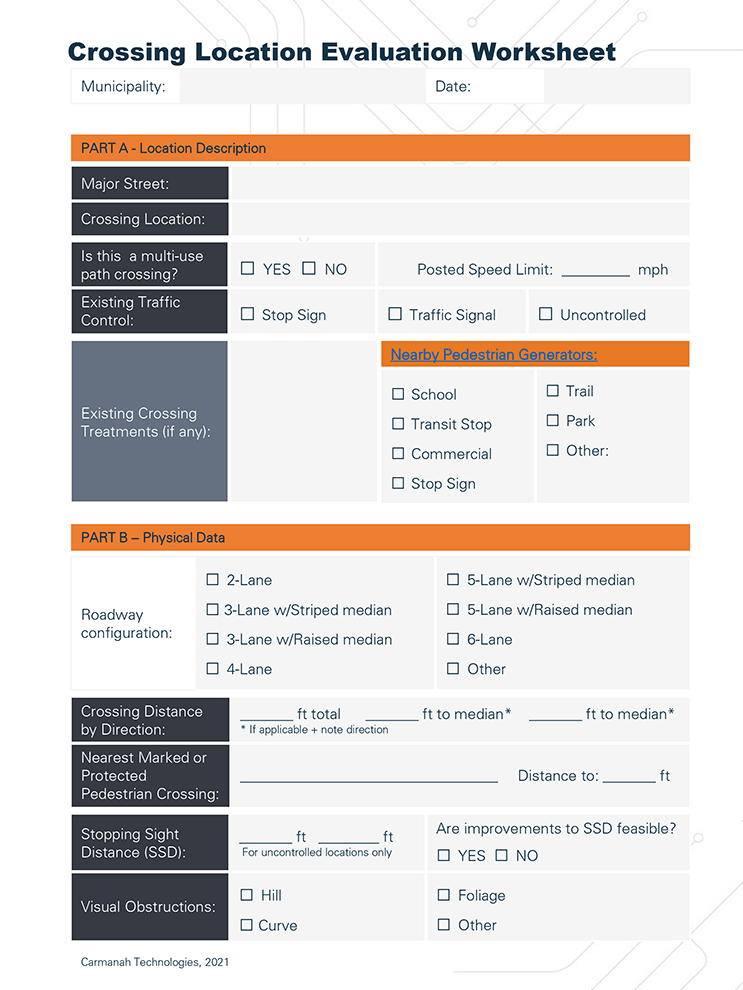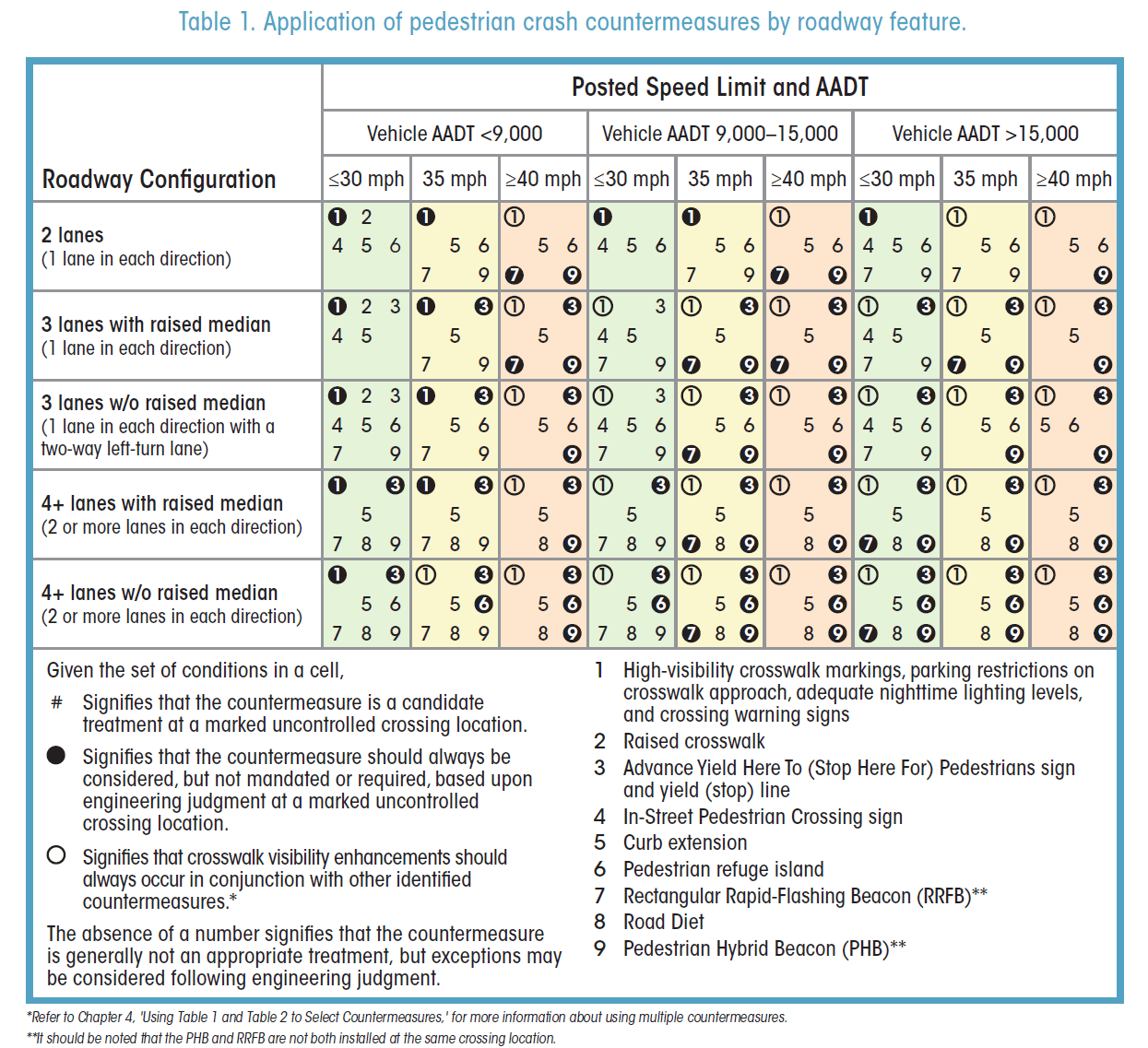Throughout the United States in 2018, 6,283 pedestrians were struck and killed in motor vehicle accidents. That statistic is critical. It represents 17% of total motor vehicle deaths annually. Notably, 75% of pedestrian fatalities occur on roadways deemed uncontrolled or non-intersections.
In response to this alarming data, The Federal Highway Administration (FHWA) has developed an in-depth, detailed guide for improving pedestrian safety at uncontrolled crossing locations. The purpose of this article is to summarize the FHWA’s guide and provide easy access to helpful weblinks that will assist your roadway safety planning.
Click the icons below to skip to each section.
![]()
Step 1: Collect Data and Engage the Public
The availability and types of information is complex, overwhelming, and often inter-connected. For the sake of simplicity, here are a few key places to concentrate your research efforts:
- Crash reports from local law enforcement
- Pedestrian injury reports from local public health officials
- The Strategic Highway Safety Plan (SHSP)
- The State’s Highway Safety Improvement Program (HSIP)
- The State’s Highway Safety Plan (HSP)
- Complete Streets policy
- Vision Zero policy
Engaging the public takes time and creative approaches. There is no single solution that gains meaningful engagement with members of your community, but here’s a few suggestions to get you started:
- Initiate a Pedestrian Safety Action Plan
- Build an interactive website with the option for residents to submit opinions and concerns.
- Conduct a walkability audit
- Form a committee or work group, like a pedestrian advisory committee.
![]()
Step 2: Assess Roadway Characteristics
Assessing the conditions of problematic roadways is the first step towards making them safer. Start by making an inventory of roadway characteristics in high-crash or high-risk locations, and then classify pedestrian crossings as controlled or uncontrolled. For example, are there existing pedestrian crossing lights? If so, what is the current condition of the lights and pushbuttons? Here’s a form to help guide your roadway evaluations:

![]()
Step 3: Analyze Crash Types and Safety Issues
There are several methods that can be utilized for analyzing reoccurring crashes and potential roadway safety issues.
- Diagram crash reports using spatial analysis tools
- Identify crash factors like speed, crossing distance, or time of day.
- Conduct a Road Safety Audit (RSA)
- Lead an informal site visit with multiple stakeholder groups
![]()
Step 4: Select Countermeasures
Now that the pedestrian crossings, roadway characteristics, and crash data has been inventoried and analyzed, it is time to select a countermeasure. The proceeding grid is a comprehensive tool, taking into consideration the Annual Average Daily Traffic (AADT), number of lanes, and posted speed limit.
![]()
Step 5: Signs, Markings, and Pedestrian Crossing Lights
Roadway changes and enhancements often include alterations to signs, markings, and traffic signals. For reasons of compliance, consult the MUTCD:
![]()
Step 6: Find Funding and Monitor Results
Finding the money to complete infrastructure improvements is a challenge. Here are some suggestions that may help your project get underway:
- Submit pedestrian crash locations as HSIP projects (Example)
- Transportation Alternatives Program
- Congestion Mitigation and Air Quality Improvement program
- Surface Transportation Block Grant
Finally, monitor your project’s success. Evaluate data like pedestrian volumes, traffic speeds, and instances of crashes. Most importantly, ask people what they think about the pedestrian safety improvements in their community!
